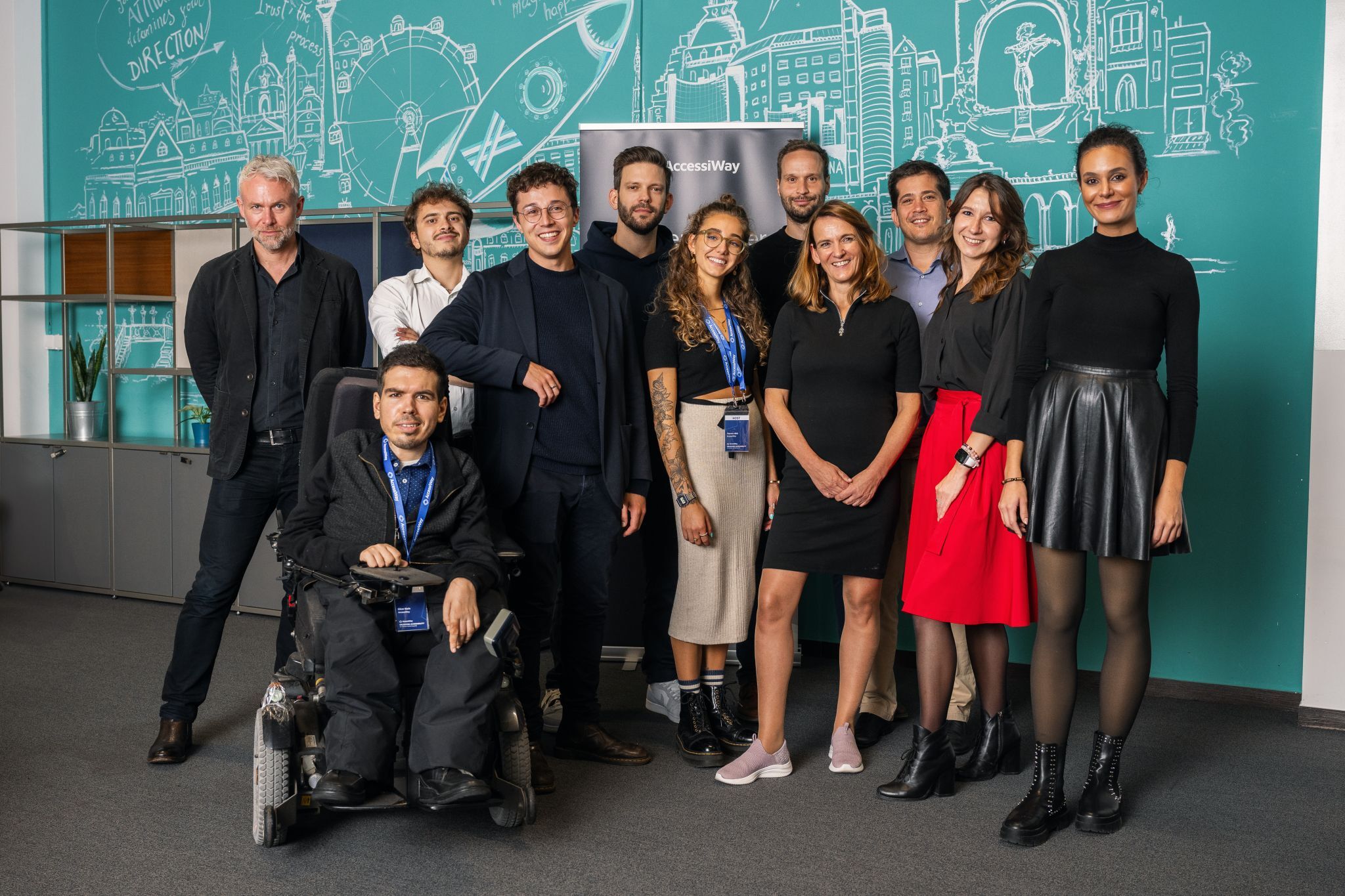Digital accessibility: a win-win for SMBs and customers
As more of the world moves online, digital accessibility is becoming a key factor in building stronger customer relationships, driving growth, and meeting evolving legal and ethical standards. To mark Global Accessibility Awareness Day (GAAD), we spoke with Amit Borsok, CEO of AccessiWay, a team.blue brand, about why accessibility should be a priority of every business’s digital strategy — and how it can unlock both commercial opportunity and social impact.
Amit Borsok is an entrepreneur who combines strong business expertise with a deep commitment to creating meaningful impact. In 2021, he founded AccessiWay to bridge the gap between technology and inclusion, empowering organizations to create truly accessible digital experiences. Under his leadership, the company has rapidly grown into a European leader, driving both business success and meaningful impact for people with disabilities.
During the conversation, he discussed the current digital landscape, highlighting the EU Accessibility Act's potential, accessibility's impact on SEO and revenue, and AI's revolutionary role in enhancing accessibility. He also shared AccessiWay's initiatives, including their strategic partnership with team.blue, which is driving innovation and change.
What is the current state of the global landscape of digital accessibility?
As we navigate the complexities of the digital landscape, it's clear that accessibility has been gaining more attention in the recent years, reaching an all-time high with the upcoming EU Accessibility Act. Furthermore, the pandemic and the shift to remote work have accelerated the need for online accessibility, emphasizing the importance of inclusive digital experiences.
However, it's worth noting that accessibility was often overlooked for many years. In fact, today more than 98% of the digital world is still not accessible to around 1 billion of people worldwide, either fully or partially. This staggering statistic underscores the significant work that remains to be done to ensure that digital products and services are usable by everyone, regardless of their abilities. The consequences of inaccessibility are far-reaching, ranging from social isolation to economic exclusion, making it imperative that we prioritize and accelerate accessibility in our digital endeavours.
What changes can SMBs expect as a result of the EU Accessibility Act, and how can they prepare?
The forthcoming EU Accessibility Act, scheduled to take effect on June 28th of this year, is expected to be a significant catalyst for change. This landmark legislation indeed has the potential to be another GDPR moment, driving a seismic shift in the way organizations approach accessibility. Europe's commitment to humanitarian values and social responsibility position it as an ideal continent to lead the charge on accessibility and the act is expected to bring about momentous changes, including increased funding for accessibility initiatives and stricter regulations and enforcement.

What are the key drivers for SMBs to adopt digital accessibility, beyond mere compliance?
Accessibility is crucial for achieving communication and revenue targets. Failing to consider accessibility not only puts organizations at risk of non-compliance but also erodes the trust and loyalty of their customers. By prioritizing accessibility, small and medium businesses can tap into new revenue streams, enhance their brand reputation, and cultivate a more inclusive and diverse customer base.
Moreover, accessibility has a profound impact on search engine optimization (SEO). By making their websites more accessible, organizations can boost their SEO effectiveness by over 20%. This is because search engine algorithms favour accessible websites, resulting in increased visibility, traffic, and conversions. Additionally, accessible websites tend to have higher engagement rates, as users with disabilities are more likely to return to and become loyal customers of websites that provide a positive online user experience.
Small and medium-sized businesses (SMBs) can also reap the benefits of digital accessibility, beyond merely complying with legal requirements. By not being accessible, a business is essentially closing the door on around 15% of the population, which represents a significant market opportunity. On the other hand, being accessible can lead to expanded markets, increased revenues, and overall greater success. Furthermore, it can enhance a company's marketing image, particularly if they are ESG-driven, impact-driven, or socially responsible, demonstrating their commitment to inclusivity and diversity.
What is the role of AI in digital accessibility?
The current state of AI is intriguing, with AI-powered tools being utilized to enhance accessibility and address issues. However, current AI technology can be somewhat unpredictable, and while it is a powerful tool, it is not yet a reliable solution for large-scale accessibility issues, often requiring manual intervention. The key to success lies in finding a balance between technological capabilities and human expertise, using AI to enhance and support accessibility initiatives rather than relying exclusively on automation.
As AccessiWay, what are you doing to overcome the challenges you face in the adoption of digital accessibility?
One of the biggest challenges we currently face is the prevalence of misinformation. Unfortunately, the lack of awareness about accessibility can sometimes lead to misguided advice, which can steer organizations off course and hinder their accessibility efforts. This not only obstructs the progress of digital accessibility but also undermines the initiative of businesses that genuinely want to become inclusive. At AccessiWay, we are committed to leading the effort to battle this phenomenon and educate the market by providing the necessary tools and expertise to help organizations achieve digital accessibility, including tailor-made training sessions on equality, culture, and inclusivity in the workplace.
Together with team.blue, we are dedicating significant resources to accessibility and are proud to have been part of this shift since joining the group in December 2024. We are collaborating with team.blue to develop customized solutions for their 3.3 million clients and have already begun implementing our AccessiWay tools across their brands leveraging their tools, support, expertise, and resources to scale and establish ourselves as a global leader in the market, thereby accelerating our growth and impact.
Through our partnership, we aim to achieve a significant impact and reach a critical mass in Europe, setting a new standard for accessibility and fostering a more inclusive digital environment where everyone has an equal opportunity to participate and succeed.